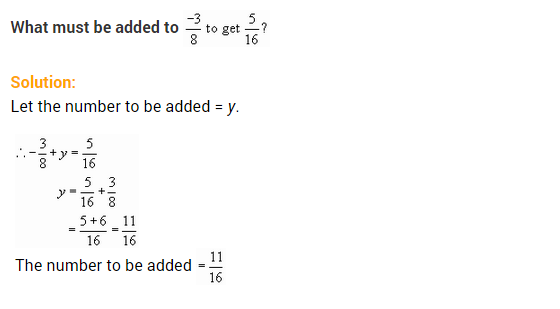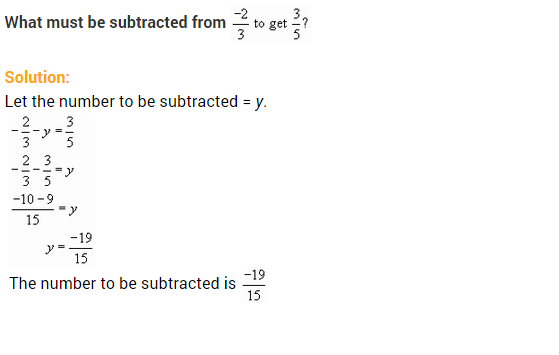NCERT Solutions for Class 8 Maths Chapter 1 Rational Numbers
NCERT Solutions for Class 8 Maths Chapter 1 Rational Numbers Exercise 1.1
Ex 1.1 Class 8 Maths Question 1.
Using appropriate properties find:
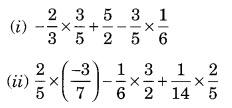
Solution:
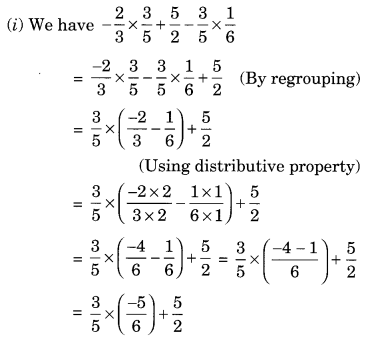
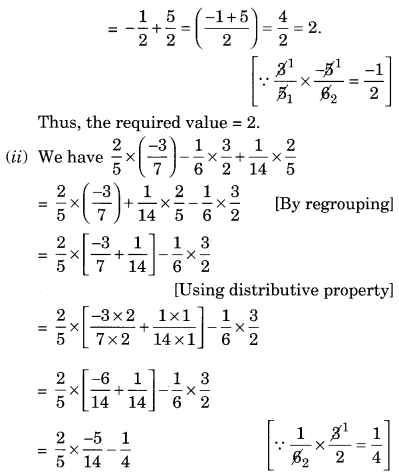
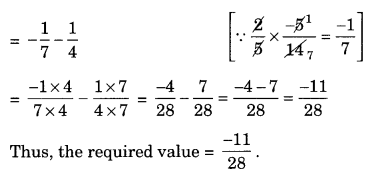
Ex 1.1 Class 8 Maths Question 2.
Write the additive inverse of each of the following:
(i) 28
(ii) −59
(iii) −6−5
(iv) 2−9
(v) 19−6
Solution:
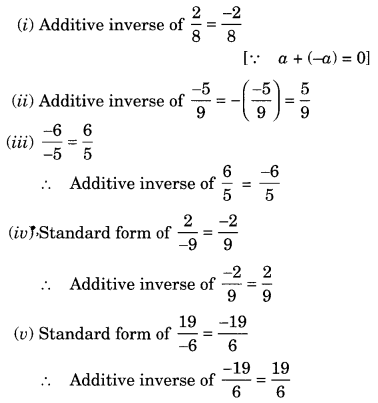
Ex 1.1 Class 8 Maths Question 3.
Verify that -(-x) = x for
(i) x = 115
(ii) x = −1317
Solution:
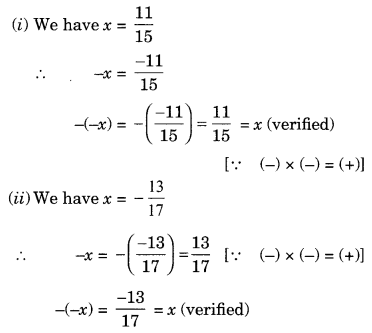
Ex 1.1 Class 8 Maths Question 4.
Find the multiplicative inverse of the following:
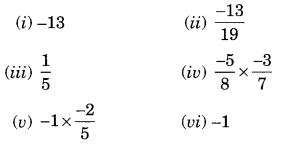
Solution:
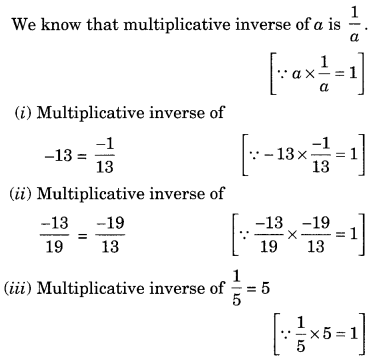
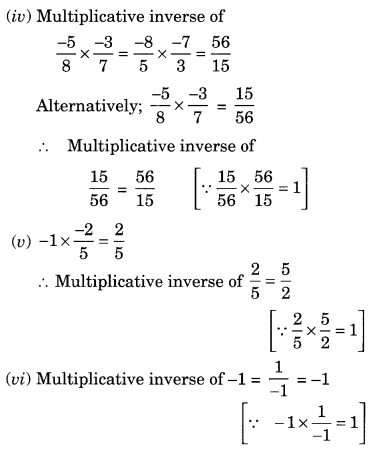
Ex 1.1 Class 8 Maths Question 5.
Name the property under multiplication used in each of the following:
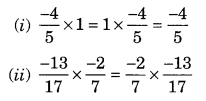

Solution:
(i) Commutative property of multiplication
(ii) Commutative property of multiplication
(iii) Multiplicative inverse property
Ex 1.1 Class 8 Maths Question 6.
Multiply 613 by the reciprocal of −716.
Solution:
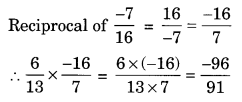
Ex 1.1 Class 8 Maths Question 7.
Tell what property allows you to compute

Solution:
Since a × (b × c) = (a × b) × c shows the associative property of multiplications.

Ex 1.1 Class 8 Maths Question 8.
Is 89 the multiplicative inverse of -118? Why or Why not?
Solution:
Here -118 = −98.
Since multiplicative inverse of 89 is 98 but not −98
89 is not the multiplicative inverse of -118
Ex 1.1 Class 8 Maths Question 9.
If 0.3 the multiplicative inverse of 313? Why or why not?
Solution:

Multiplicative inverse of 0.3 or 310 is 103.
Thus, 0.3 is the multiplicative inverse of 313.
Ex 1.1 Class 8 Maths Question 10.
Write:
(i) The rational number that does not have a reciprocal.
(ii) The rational numbers that are equal to their reciprocals.
(iii) The rational number that is equal to its negative.
Solution:
(i) 0 is the rational number which does not have its reciprocal
[∵ 10 is not defined]
(ii) Reciprocal of 1 = 11 = 1
Reciprocal of -1 = 1−1 = -1
Thus, 1 and -1 are the required rational numbers.
(iii) 0 is the rational number which is equal to its negative.
Ex 1.1 Class 8 Maths Question 11.
Fill in the blanks.
(i) Zero has ……….. reciprocal.
(ii) The numbers ……….. and ……….. are their own reciprocals.
(iii) The reciprocal of -5 is ………
(iv) Reciprocal of 1x, where x ≠ 0 is ……….
(v) The product of two rational numbers is always a …………
(vi) The reciprocal of a positive rational number is ……….
Solution:
(i) no
(ii) -1 and 1
(iii) −15
(iv) x
(v) rational number
(vi) positive
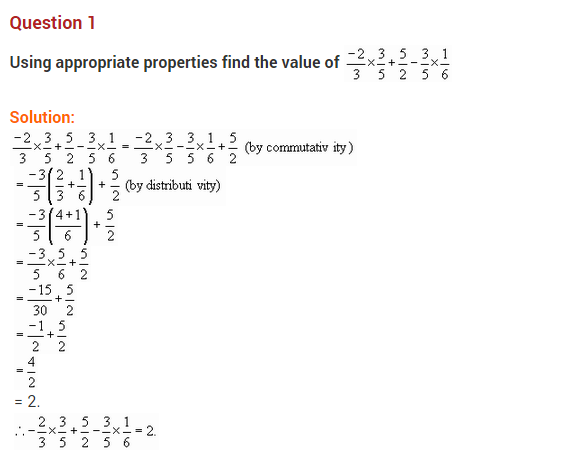
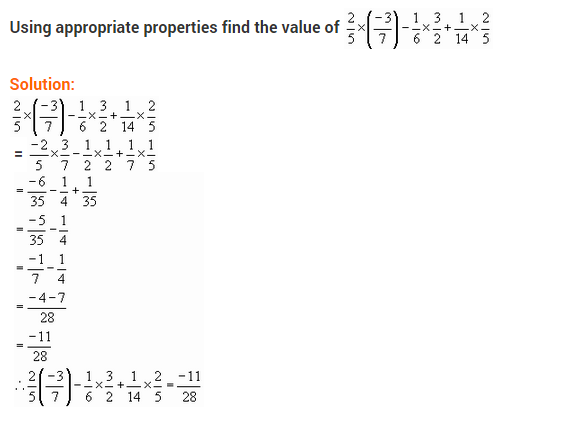


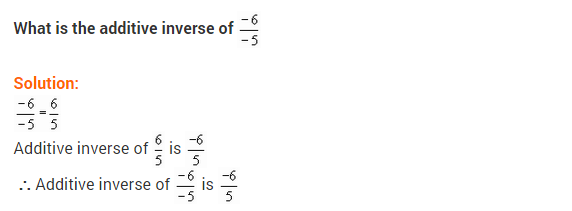

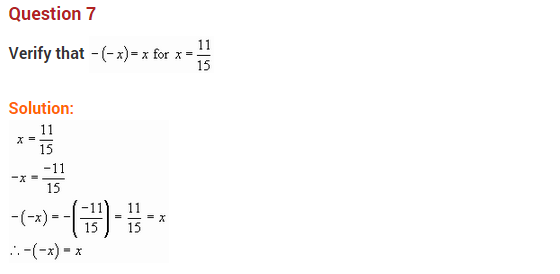
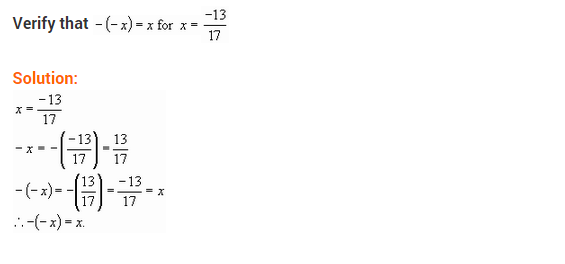




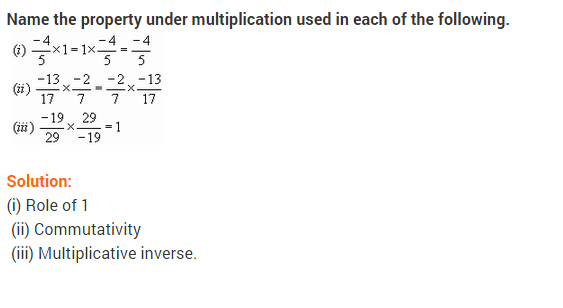
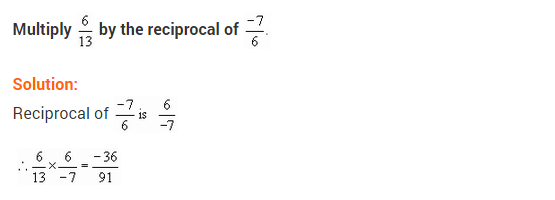

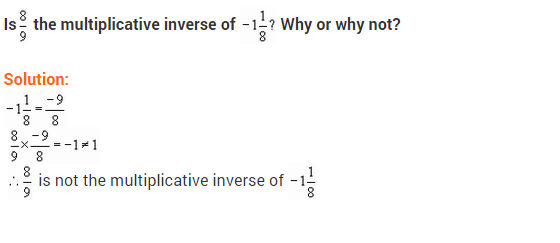
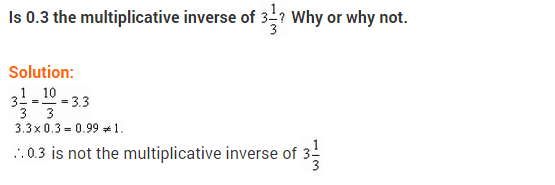
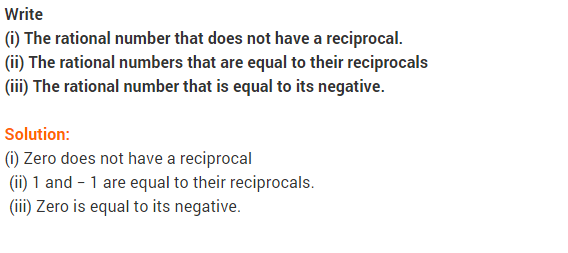
NCERT Solutions for Class 8 Maths Chapter 1 Rational Numbers Exercise 1.2
Ex 1.2 Class 8 Maths Question 1.
Represent these numbers on the number line
(i) 74
(ii) −56
Solution:
(i) 74

Here, point A represents 74 on the number line.
(ii) −56

Here, point B represents −56 on the number line.
Ex 1.2 Class 8 Maths Question 2.
Represent −211, −511 , −911 on a number line.
Solution:
We have −211, −511 and −911

Here, point A represents −211 , point B represents −511, point C represents −911
Ex 1.2 Class 8 Maths Question 3.
Write five rational numbers which are smaller than 2.
Solution:
Required five rational numbers smaller than 2 are
1, 0, 12, 13 and 14
Ex 1.2 Class 8 Maths Question 4.
Find ten rational numbers between −25 and 12.
Solution:
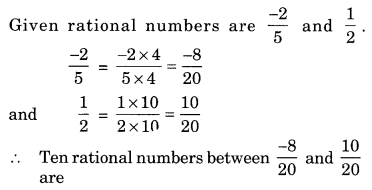
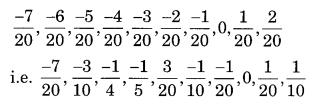
Ex 1.2 Class 8 Maths Question 5.
Find five rational numbers between
(i) 23 and 45
(ii) −32 and 53
(iii) 14 and 12
Solution:
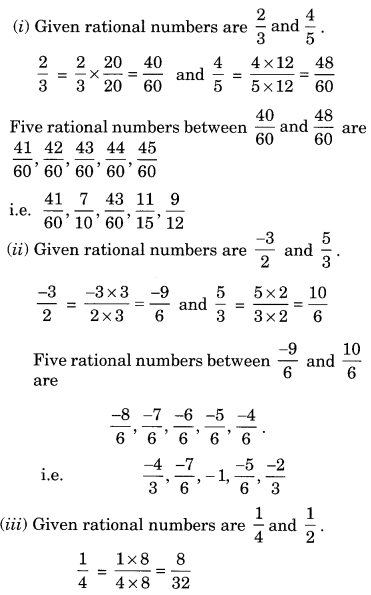
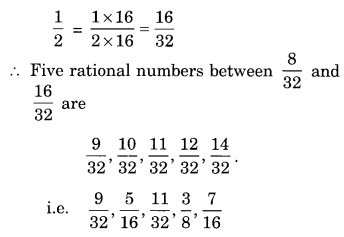
Ex 1.2 Class 8 Maths Question 6.
Write five rational numbers greater than -2.
Solution:
Required rational numbers greater than -2 are -1, 0, 12, 34 , 1.
Ex 1.2 Class 8 Maths Question 7.
Find ten rational numbers between 35 and 34.
Solution:
Given rational numbers are 35 and 34.
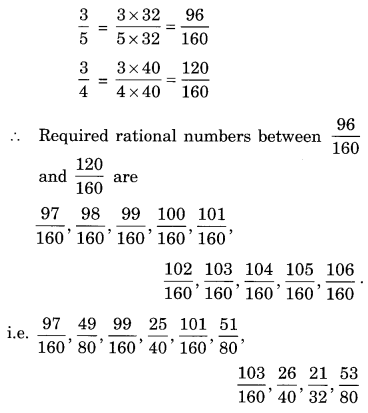




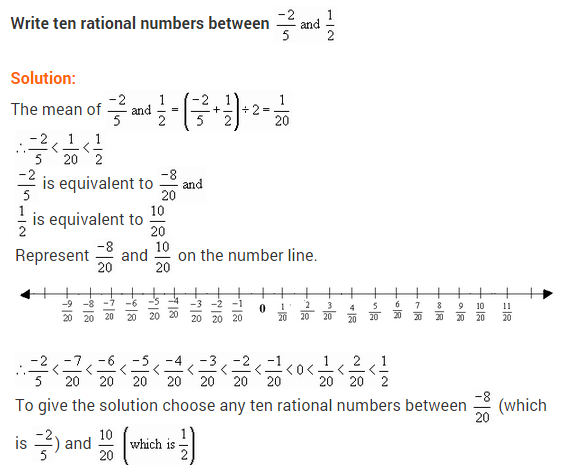
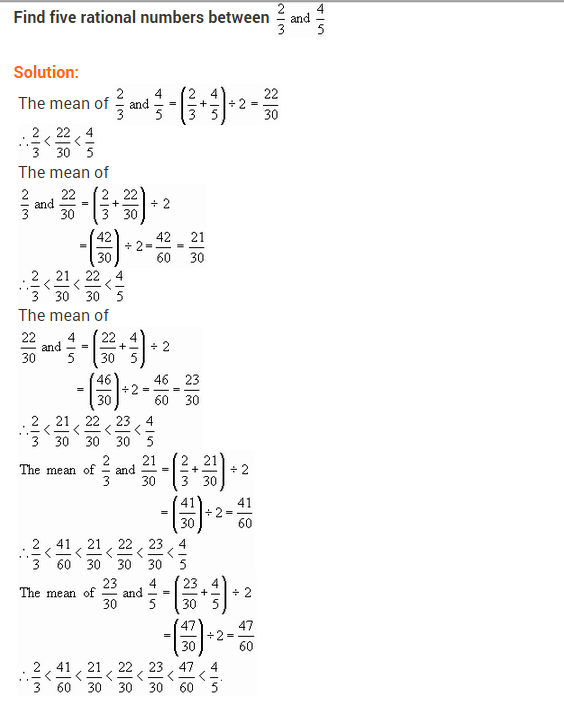
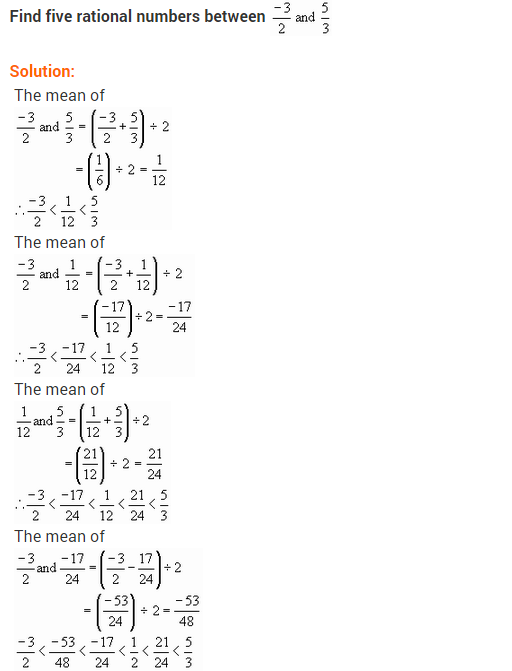

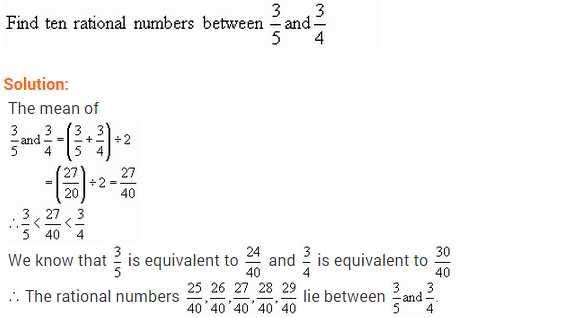
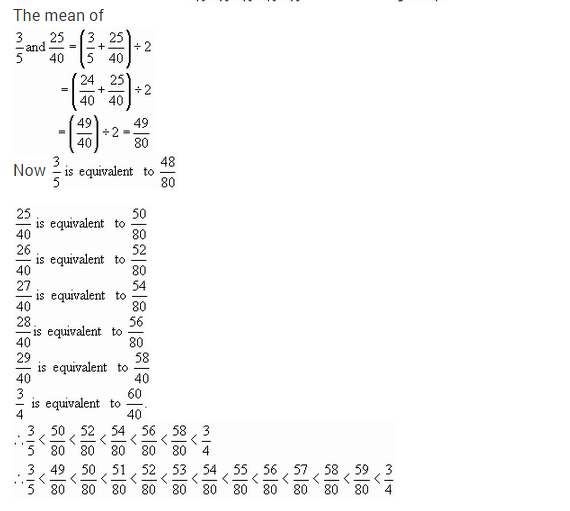
Rational Numbers Class 8 Extra Questions Maths Chapter 1
Extra Questions for Class 8 Maths Chapter 1 Rational Numbers
Question 1.
Pick up the rational numbers from the following numbers.
67, −12, 0, 10, 1000
Solution:
Since rational numbers are in the form of ab where b ≠ 0.
Only 67, −12 and 0 are the rational numbers.
Question 2.
Find the reciprocal of the following rational numbers:
(a) −34
(b) 0
(c) 611
(d) 5−9
Solution:
(a) Reciprocal of −34 is −43
(b) Reciprocal of 0, i.e. 10 is not defined.
(c) Reciprocal of 611 is 116
(d) Reciprocal of 5−9 = −95
Question 3.
Write two such rational numbers whose multiplicative inverse is same as they are.
Solution:
Reciprocal of 1 = 11 = 1
Reciprocal of -1 = 1−1 = -1
Hence, the required rational numbers are -1 and 1.
Question 4.
What properties, the following expressions show?
(i) 23+45=45+23
(ii) 13×23=23×13
Solution:
(i) 23+45=45+23 shows the commutative property of addition of rational numbers.
(ii) 13×23=23×13 shows the commutative property of multiplication of rational numbers.
Question 5.
What is the multiplicative identity of rational numbers?
Solution:
1 is the multiplicating identity of rational numbers.
Question 6.
What is the additive identity of rational numbers?
Solution:
0 is the additive identity of rational numbers.
Question 7.
If a = 12, b = 34, verify the following:
(i) a × b = b × a
(ii) a + b = b + a
Solution:


Question 8.
Multiply 58 by the reciprocal of −38
Solution:

Question 9.
Find a rational number between 12 and 13.
Solution:
Rational number between

Question 10.
Write the additive inverse of the following:
(a) −67
(b) 101213
Solution:

Question 11.
Write any 5 rational numbers between −56 and 78. (NCERT Exemplar)
Solution:

Question 12.
Identify the rational number which is different from the other three : 23, −45, 12, 13. Explain your reasoning.
Solution:
−45 is the rational number which is different from the other three, as it lies on the left side of zero while others lie on the right side of zero on the number line.
Rational Numbers Class 8 Extra Questions Short Answer Type
Question 13.
Calculate the following:

Solution:


Question 14.
Represent the following rational numbers on number lines.
(a) −23
(b) 34
(c) 32
Solution:

Question 15.
Find 7 rational numbers between 13 and 12.
Solution:

Question 16.
Show that:

Solution:

Question 17.
If x = 12, y = −23 and z = 14, verify that x × (y × z) = (x × y) × z.
Solution:
We have x = 12, y = −23 and z = 14
LHS = x × (y × z)

Question 18.
If the cost of 412 litres of milk is ₹8912, find the cost of 1 litre of milk.
Solution:

Question 19.
The product of two rational numbers is 1556. If one of the numbers is −548, find the other.
Solution:
Product of two rational numbers = 1556
One number = −548
Other number = Product ÷ First number

Hence, the other number = −187
Question 20.
Let O, P and Z represent the numbers 0, 3 and -5 respectively on the number line. Points Q, R and S are between O and P such that OQ = QR = RS = SP. (NCERT Exemplar)
What are the rational numbers represented by the points Q, R and S. Next choose a point T between Z and 0 so that ZT = TO. Which rational number does T represent?
Solution:

As OQ = QR = RS = SP and OQ + QR + RS + SP = OP
therefore Q, R and S divide OP into four equal parts.

Question 21.
Let a, b, c be the three rational numbers where a = 23, b = 45 and c = −56 (NCERT Exemplar)
Verify:
(i) a + (b + c) = (a + b) + c (Associative property of addition)
(ii) a × (b × c) – (a × b) × c (Associative property of multiplication)
Solution:


Rational Numbers Class 8 Extra Questions Higher Order Thinking Skills (HOTS)
Question 22.
Rajni had a certain amount of money in her purse. She spent ₹ 1014 in the school canteen, bought a gift worth ₹ 2534 and gave ₹ 1612 to her friend. How much she have to begin with?
Solution:
Amount given to school canteen = ₹ 1014
Amount given to buy gift = ₹ 2534
Amount given to her friend = ₹ 1612
To begin with Rajni had

Question 23.
One-third of a group of people are men. If the number of women is 200 more than the men, find the total number of people.
Solution:
Number of men in the group = 13 of the group
Number of women = 1 – 13 = 23
Difference between the number of men and women = 23 – 13 = 13
If difference is 13, then total number of people = 1
If difference is 200, then total number of people
= 200 ÷ 13
= 200 × 3 = 600
Hence, the total number of people = 600
Question 24.
Fill in the blanks:
(a) Numbers of rational numbers between two rational numbers is ……….

Solution:
(a) Countless
(b) 611
(c) −32
(d) 35
(e) Commutative
(f) associative
(g) equivalent
(h) 311






